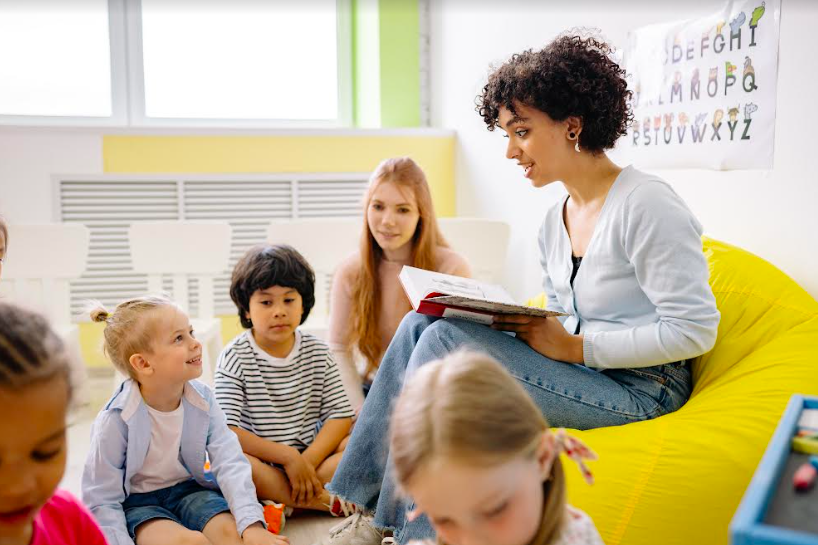Experts believe that by 2030 the educational sphere will change significantly: the share of online education will grow, and democratic trends will dominate. Experts from paper writing service call peer-to-peer education one of them.
What is Peer-to-Peer Learning, and How Does Peer-to-Peer Learning Differ from Collaborative Learning?
The educational concept of peer-to-peer (abbreviated as P2P-learning, or mutual learning) has no strict definition.
In a broad sense, peer-to-peer learning refers to an educational model where people teach each other. They interact closely in the process – sharing experience, knowledge, and information – and in this way, form bonds and create communities based on the principles of support and mutual assistance. At the same time, the teacher or instructor in such training does not act as a source of new knowledge but as a creator and facilitator of the educational environment. That is, peer-to-peer is a type of active learning.
Peers are usually considered to be participants in the educational process who are on the same level in the academic hierarchy: i.e., schoolchildren, students, and colleagues. There is no administrative subordination between them, so in P2P learning, there is no place for warnings or instructions, let alone punishments.
However, just as there is no clear definition, there is no strict classification of P2P. For example, some experts consider any interaction between equal participants in the educational process to be P2P.
Others distinguish between P2P learning and collaborative learning. Collaborative learning in this interpretation occurs when students work in groups to find solutions to a problem and discuss ideas together. That is, they learn with each other. And in the P2P model, one student leads another through a concept or problem. That is, one student teaches another.
Cooperative learning techniques work well when, for example, the class participates in a discussion after being introduced to a new topic. And P2P can come in handy when you need to manage different paces of learning: Students who have mastered the material faster than others will help their classmates figure it out.
That said, peer-to-peer learning can be formal and informal and applied almost anywhere. For example, when classmates help each other with homework or explain new material, this is nothing but peer-to-peer learning in its simplest form.
How P2P Learning Came About
Peer-to-peer learning is not a new concept. Some researchers believe it has its roots in history, as people have always exchanged knowledge. Among the first recorded methods of mutual learning is the Bell-Lancaster system. Its essence was that students who had already mastered the ability (called monitors) taught the other students.
British educators Andrew Bell and Joseph Lancaster proposed this method independently of each other in the late 18th century. They saw it as a quick and cheap way to improve literacy, given the shortage of teachers for mass education. Bell’s and Lancaster’s schooling system was as follows: first, teachers taught older students and tested their knowledge, and then those students, having received instructions from the teacher, taught their younger counterparts.
By the beginning of the nineteenth century, this system was widespread in Great Britain, France, Denmark, Russia, the United States, and other countries. The Bell and Lancaster schools were intended primarily for the poorest segments of the population – and were the only way to get any kind of education.
Half a century later, the Lancaster schools went out of fashion. Still, Bell and Lancaster’s ideas are reflected in many pedagogical approaches and have influenced the development of peer-to-peer learning.
Another impetus for the P2P concept was the popularity of constructivist ideas: proponents of this approach believe that the more people cooperate in the learning process, the better the results will be.
Principles of Peer Learning
There are no clear rules of what peer-to-peer learning should look like, so in practice, it can be implemented in different forms: both in a group and “one-on-one,” as a single approach or as part of a program that includes classical teaching, too.
Researchers count several scenarios in which peer learning in education can be implemented. Among them:
-
A more experienced student is teaching a less experienced student. It is the most common type of P2P. For example, high school students teach classes to younger kids. Or an employee with more experience leads a less skilled colleague (this educational scenario is usually referred to as mentoring).
-
Discussion seminars in which students or colleagues discuss knowledge gained, exchange opinions, clarify aspects of the topic they do not understand, and share information they have also found.
-
Learning support groups – a learning format in which students come together to study or prepare for exams, share ideas, discuss topics, and so on.
-
Feedback. Students check each other’s work and try to give constructive feedback. This method helps to see how others do the assignments, analyze their cognitive and learning strategies, and gain diplomatic communication skills. It is used in schools, universities, and corporate practice.
-
Joint (group or pair) projects. Students work together on a problem.
-
Budding (buddy system – comes from the English word buddy, which means “buddy”) – a format where two students come together to support each other, share information, share successes and insights.
What are the benefits of P2P learning
We believe that the advantage of the mutual learning method is that the technology is based on the joint construction of knowledge, and subjectivity is transferred from the instructor (teacher) to your peer. This format creates a more trusting educational environment, increases motivation, and strengthens horizontal connections and interactions.
Among the strengths of P2P are also the following:
Development of flexible skills and a conscious approach to learning
Peer-to-peer learning is believed to develop valuable skills such as critical thinking, communication, coping, knowledge and teamwork, and metacognition skills.
The latter, for example, is confirmed by a study conducted by a group of American scientists in 2011. Thirty-nine students in an “Introduction to Teaching” course in agricultural and extension education took part in that experiment. They were asked to prepare and conduct a class for their fellow students. The students demonstrated elements of metacognitive skills as they began to reflect on their learning strategies as they prepared for the course by observing how others were learning.
Immersion in the topic
Reciprocal learning provides a deeper understanding of the material. Research confirms that teaching something to someone else, sharing knowledge with fellow students, is beneficial because it makes them repeat concepts they have already learned, thereby strengthening neural connections and better understanding and remembering the topic being taught.
Motivation to learn
The peer-to-peer approach can positively impact the motivation of participants in the learning process.
For example, a study at the University of Michigan (USA) showed that students performed better when their classmates, not their instructors, discussed the benefits of learning a topic.
According to the study’s authors, a possible reason is that it is easier for a student to identify with a peer than with an instructor. And therefore, it is easier to share motives and see opportunities to apply the knowledge gained.
Involvement
The P2P approach transforms students from passive listeners to active participants. Studies show that people actively involved in the learning process are one and a half times more likely to successfully complete studies and pass exams than those who simply consume content.
Vast possibilities of application
The mutual learning method is flexible enough; therefore, it can be implemented in different forms, types, and proportions as part of an educational program. Moreover, it is suitable for all kinds of learning: school, university, and mainly corporate.
There are no limits to the application of the method and in terms of the subject: for example, this method of teaching is among the techniques that are useful for improving the qualifications of teachers. That is, the teacher who mastered some new skill faster (for example, learning to work with a digital tool) can teach it from his experience to his colleagues.
A large number of advantages and flexibility of the approach allow experts to talk about peer-to-peer as a future trend in education. Kirill Prudnikov believes this is also related to the focus on creating shared knowledge: “The current moment shows that any breakthroughs are only possible in collaborative “thought activity. It is evidenced, for example, by the list of Nobel Prize winners in physics, where the last time the prize went to a single scientist, not a group, was in 1992. After that, the prize was awarded for group research.
Disadvantages of Peer-to-Peer Learning
Despite the considerable number of pluses, P2P has disadvantages as well. First of all, it is the inexperience of the participants in such learning. After all, the ability to convey information quickly and understandably is a skill that requires constant and long practice. Lack of experience can lead to the fact that the instructions are too confusing and the feedback is vague and blurred.
The second point to consider is the attitude toward the process. A professional teacher, educator, or trainer is unlikely to abandon a program halfway through; they will try to bring their charges to a logical conclusion. And in programs where training is conducted only on an equal footing, you cannot be sure that participants will reach the end and get the desired result.
It leads to the third disadvantage of P2P: the learning process cannot be fully controlled, and the educational results may be unexpected.
Another disadvantage is that application of the peer-to-peer format can create an illusion among teachers that they do not need to design the learning process and that all the responsibility lies with the participants.
Bio:
Elissa Smart is an education specialist at PaperHelp. Not only does she help students with specific research and writing requests, but she also finds the energy to share her extensive experience through blog posts.











